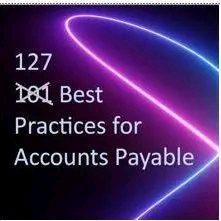Contingent Liabilities || Examples and Identification

Contingent liabilities are potential obligations that may arise in the future, depending on certain events or circumstances.
These liabilities are not recorded on the balance sheet but have the potential to impact a company’s financial health.
In this article, we will delve into contingent liabilities, provide examples, discuss how to identify them, and explore their implications on the balance sheet.
Examples of Contingent Liabilities
1. Lawsuits and Legal Claims
Companies may face potential lawsuits or legal claims related to product defects, breach of contracts, intellectual property disputes, or personal injury. Until the outcome of these cases is determined, the liability remains contingent.
2. Guarantees and Indemnities
Companies sometimes provide guarantees or indemnities for third-party obligations, such as loans or leases. If the third party defaults on its obligations, the company may be required to fulfill those obligations, resulting in a contingent liability.
3. Product Warranties
When a company offers warranties for its products, it incurs potential contingent liabilities. The costs associated with fulfilling warranty claims are recognized as contingent liabilities until the claims are made.
4. Environmental Cleanup
Companies involved in industries like manufacturing or chemical production may have potential contingent liabilities associated with environmental cleanup costs. These liabilities arise if pollution or environmental damage occurs, requiring remediation efforts.
How to Identify Contingent Liabilities
Identifying contingent liabilities requires careful analysis of a company’s operations, contracts, and legal obligations.
Here are some key methods to identify contingent liabilities:
1. Reviewing Contracts
Examine contracts, agreements, and warranties to identify any potential obligations that may become liabilities in the future. Pay attention to terms regarding guarantees, indemnities, or clauses related to potential legal disputes.
2. Legal Counsel and Experts
Consult legal counsel or subject matter experts to assess the potential risks and liabilities associated with specific activities, contracts, or industry regulations. Their expertise can help identify contingent liabilities that may not be apparent initially.
3. Industry Research
Conduct thorough research into your industry to understand common contingent liabilities that companies face. Learn from the experiences of other businesses to identify potential risks and liabilities relevant to your own operations.
4. Financial Statement Analysis
Examine financial statements, including footnotes, to identify any disclosures related to contingent liabilities. Companies often provide information on potential risks and uncertainties that could lead to contingent liabilities in their financial reports.
Contingent Liabilities on the Balance Sheet
Contingent liabilities are typically not recorded on the balance sheet because they are uncertain in nature. However, they are disclosed in the footnotes or accompanying financial statements.
The purpose of disclosing contingent liabilities is to provide transparency and allow stakeholders to assess the potential impact on a company’s financial position and performance.
FAQ
What is the difference between a contingent liability and an actual liability?
A contingent liability is a potential obligation that depends on the occurrence of certain events, whereas an actual liability has already been incurred and is recorded on the balance sheet.
Can contingent liabilities impact a company’s financial health?
Yes, contingent liabilities can have a significant impact on a company’s financial health if they materialize. They may require substantial financial resources and affect profitability, cash flow, and overall stability.
Are contingent liabilities disclosed in financial statements?
Yes, contingent liabilities are typically disclosed in the footnotes or accompanying financial statements. This disclosure helps provide transparency and inform stakeholders about potential risks.
Can contingent liabilities be estimated and recorded on the balance sheet?
No, contingent liabilities are not recorded on the balance sheet unless they are deemed probable and can be reasonably estimated. Until then, they remain as potential obligations.





